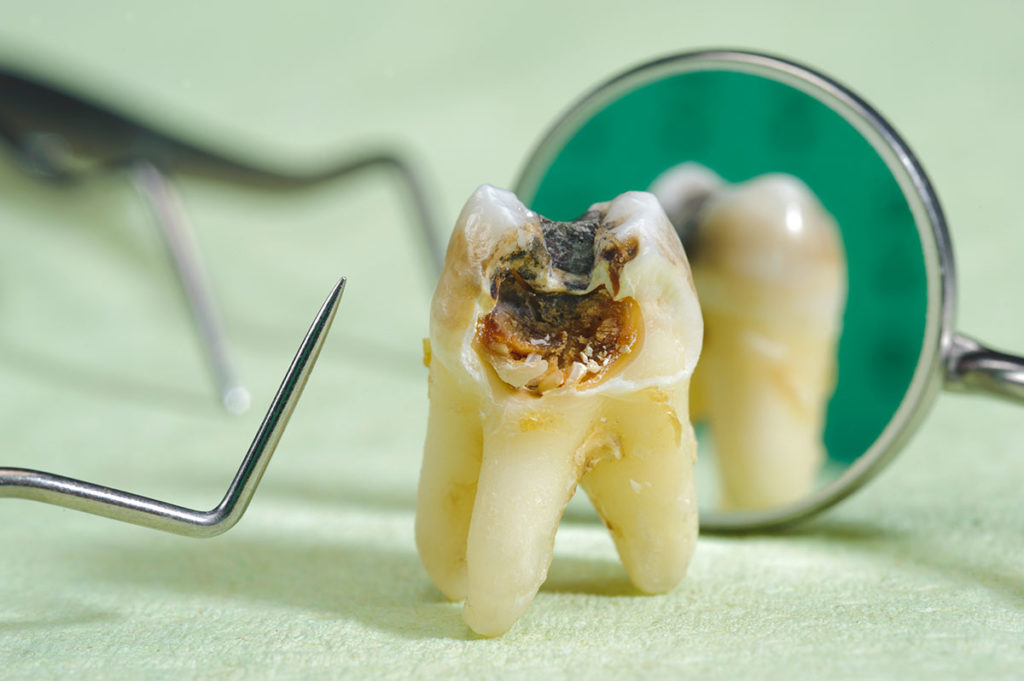Tooth decay is a serious problem people encounter, and it’s caused by the bacteria in your mouth wearing down your enamel. Tooth decay can lead to serious oral problems like cavities and abscesses. To keep your teeth safe, you must take the right steps to avoid tooth decay, such as brushing twice a day, flossing, and using fluoride to clean your mouth.
Please continue reading to learn everything you need to know about the stages of tooth decay so that you can recognize a problem before it gets out of control. This guide will discuss mineral loss, enamel, and the pulp of your teeth.
Loss of Minerals
The first stage of tooth decay is when the plaque on your teeth attacks the minerals that protect you from bacteria. This stage is difficult to detect because you all experience any painful symptoms or noticeable changes yet. The best way you can prevent the first step of tooth decay is to keep an eye on how much plaque is on your teeth.
Typically, the plaque is yellow, and you can scratch it using a tool. If you notice plaque buildup, you must be more diligent about brushing your teeth with a soft bristle brush. You should also add fluoride to your dental routine to prevent harmful bacteria from attacking your teeth. It would help if you also flossed at least once a day because plaque can build up between your teeth and begin the first step of tooth decay.
Wear Out Enamel
After you lose minerals in your teeth, you have to worry about your enamel decaying. This is the second step of tooth decay and where most people will start to notice problems. When your enamel breaks down, it will open the door for cavities to develop and cause great pain and discomfort. If you notice discoloration in your teeth or plaque buildup, you should avoid sugar, acidic foods, and be mindful of your meals.
When you’re in the second stage of tooth decay, you still have time to reverse the negative effects by brushing, flushing, and using fluoride. However, beyond this second step, it will be much more difficult to reverse your tooth decay without professional intervention. When you notice plaque buildup on your teeth, it’s time to act so that you don’t have complicated dental problems.
Dentin Exposure
The third step of tooth decay is dentin decay which occurs after you’ve worn down your enamel. When tooth decay reaches the dentin in your teeth, this will cause cavities that you need to have a dentist fill. Unfortunately, you cannot reverse cavities at home because cavities permanently damage your teeth. The most you can do is fill them out at your dental office.
Dentin Is the part of your tooth that resides under your tooth enamel. Your enamel works to protect this layer of your tooth so that you don’t develop cavities. Eating or going about your daily routine can be extremely painful when you have dentin decay.
Damage to The Pulp Of Your Teeth
If you don’t have your cavities filled, you can experience even worse tooth decay that many people cannot tolerate. When bacteria infiltrate the pulp of your teeth, you’re on the way to a dental abscess. Your dentin and enamel work to protect this area of your tooth so that you can keep it.
When the pulp of your teeth decays, you’ll have difficulty eating cold or hot food, making it difficult to function. You may also experience random bursts of sharp pain in your mouth when you have pulp decay. This pain can be excruciating and persistent, so you should see a dentist as soon as possible, to prevent the situation from worsening.
Bacteria Attacks The Tooth and Causes an Abscess
The final stage of tooth decay is abscess formation which can cause extreme pain all over your mouth and face. And access is an area of pus in your tooth and usually goes hand in hand with infections. When you have an Abscess tooth, you’ll need dental care to resolve the issue and prescribe antibiotics.
If you have an abscessed tooth, do not ignore the situation and seek medical attention immediately. Neglecting to take care of your abscess can lead to an infection that spreads across your entire face and permanently damages your muscle tissue. Also, living with an abscessed tooth is extremely painful and makes it hard to eat, drink, and function.
Your dentist might perform a root canal or remove the tooth to treat the situation. The measure your dentist takes depends on how severe your abscess tooth is and if the situation is salvageable. There are some scenarios where you cannot keep your tooth after an abscess because there’s too much damage, and keeping it would only worsen the problem.
How Orthodontic Treatment Can Help
Orthodontic care is crucial if you want to prevent your tooth decay from worsening and becoming unbearable. Tooth decay can become a serious problem affecting your entire facial tissue if you’re not careful. A dentist might have to remove your teeth or perform a root canal if you let your tooth decay get too far.
You can also visit an orthodontist to help prevent good decay because it’s more common in people with overlapping or crowded teeth. These situations make it difficult for you to brush and floss between your teeth and can create a section of bacteria that decays your teeth. Your orthodontist can prescribe you braces or aligners to help get your teeth into the right position, making them easier to clean.
Final Thoughts
Tooth decay can be unbearably painful, but you can have your orthodontist straighten your teeth, so you are unlikely to experience this situation. When your teeth are too close, it can be difficult to brush and floss between them, so straightening them into the spots they’re supposed to be can be majorly beneficial. If tooth decay gets too far, it can cause an abscess, and you’ll have to go on antibiotics to prevent the infection from spreading throughout your face.



